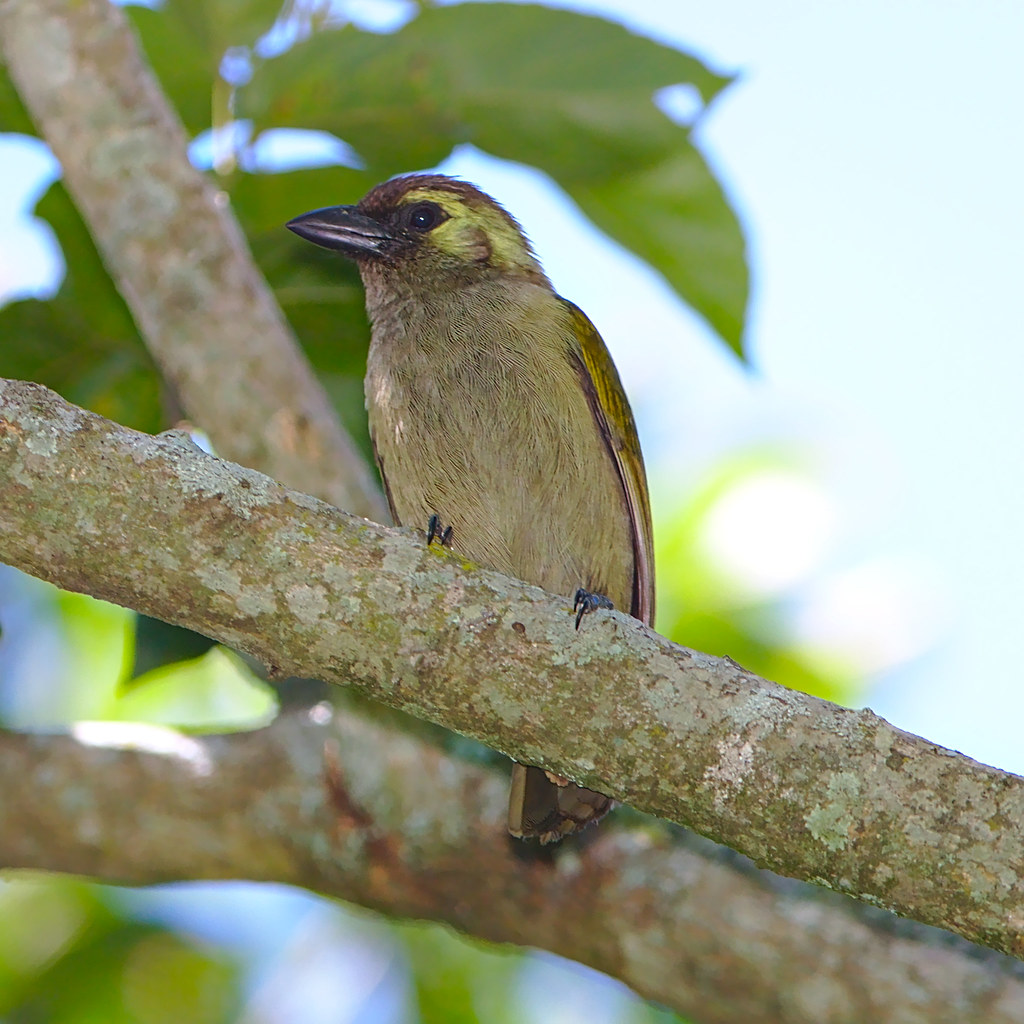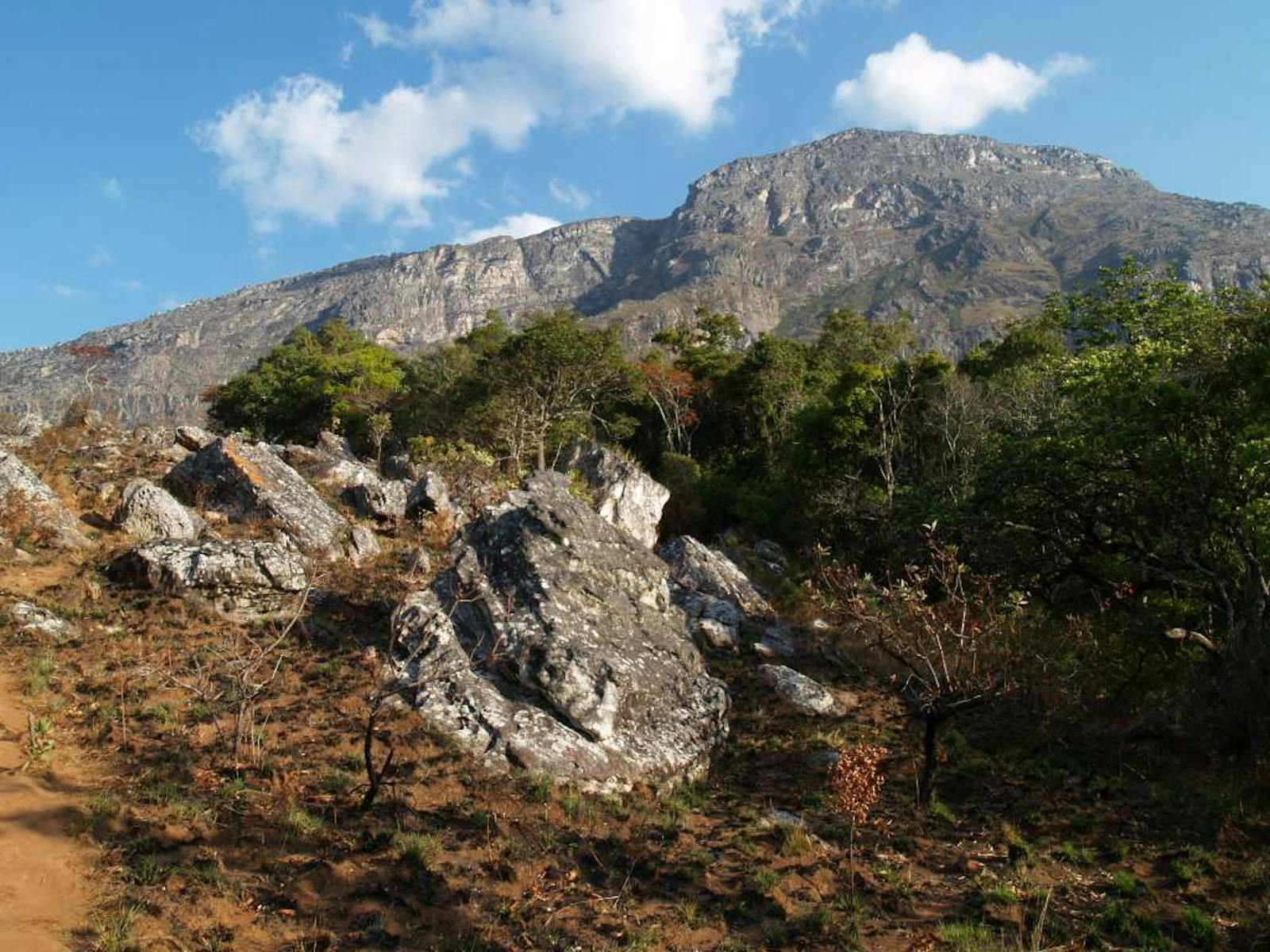Southern Swahili Coastal Forests and Woodlands
The ecoregion’s land area is provided in units of 1,000 hectares. The protection goal is the Global Safety Net (GSN1) area for the given ecoregion. The protection level indicates the percentage of the GSN goal that is currently protected on a scale of 0-10. N/A means data is not available at this time.
Bioregion: East African Coastal Forests (AT7)
Realm: Afrotropics
Ecoregion Size (1000 ha):
14,991
Ecoregion ID:
28
Protection Goal:
18%
Protection Level:
8
States: Mozambique, Malawi, Tanzania
This ecoregion has a gently rolling topography with some isolated higher plateaus and inselbergs with important sand dunes supporting forest vegetation. The ecoregion contains important sub-centers of endemism. The most significant of which is in the Lindi area of southern Tanzania, associated with a number of raised plateaus. Rondo plateau has one of the most important concentrations of endemic plants in eastern Africa (more than 60 endemic species in less than 50 km2 of forest). It also contains the near-endemic Rondo dwarf galago, one endemic subspecies of bird, green barbet, and several endemic reptiles.

The flagship species of the Southern Swahili Coastal Forests and Woodlands ecoregion is the green barbet. Image credit: Courtesy of Derek Keats, Flickr.
The ecoregion runs approximately 2,200 km along the eastern coast of Africa, from the Lukuledi River in southern Tanzania to the Changane River just south of Xai-Xai in Mozambique. It extends less than 50 km inland, although there are a few tiny outliers approximately 200 km inland in the foothills of mountains. The ecoregion also includes small offshore islands in Mozambique. Inland from Lindi, remnant areas of Miocene uplift have been eroded into plateau areas that rise up to 800 m in altitude, especially at the Rondo Plateau. Further south, the Makonde Plateau rises up to 1,000 m altitude.
The ecoregion has a tropical climate in the northern portion and borders the subtropical zone in the southern portion. Rainfall, controlled by monsoon winds, is around 800-1,000 mm per year, although it is higher on some of the plateaus. In coastal Mozambique, the climate follows the same general trends, but with lower rainfall in the north (around 800 mm per annum). Mean maximum temperatures are 27–30°C in the north and 24°C in the south.
The species richness in this ecoregion is low for obligate forest species, but is greatly elevated by the species found in the diverse mosaic of non-forest habitat types. A high number of endemic species occur in the ecoregion including more than 150 strictly endemic plants, with 100 species confined to Southern Tanzania. Very little studies were done in Mozambique until more recently where many endemic species were discovered including Micklethwaitia carvalhoi.
Larger mammal species include elephant, buffalo, sable antelope, roan antelope and Lichtenstein’s hartebeest. The only endemic mammal is Vincent’s bush squirrel, confined to Mount Namuli in Mozambique. Among the reptiles, strictly endemic species include Ancylocranium and Chirindia (worm lizards), Chamaeleo and Rhampholeon (chameleons), Scelotes (burrowing skink), and Typhlops (burrowing snakes). There is only one near-endemic amphibian, the Mahenge toad.
The forests of this ecoregion have probably been reduced in extent over thousands of years. Currently, around 1,479 km2 of habitat remains, mainly in Mozambique. The ecoregion also supports extensive areas of savannah-woodland, bushland and thicket, and wetlands of various types, especially in Mozambique. In southern Tanzania the remaining blocks of forest habitat are small (none more than 20 km2), and most are found within government forest reserves, with Rondo being a Nature Reserve.
The most important forest in southern Tanzania is found on the Rondo Plateau, which is regenerating now after being extensively logged. In northern Mozambique extensive areas of forest/thicket remain. In southern Mozambique there are also a number of forests, but these are typically small. Three protected areas cover this ecoregion in Mozambique (Quirimbas National park, Bazaruto National Park, and Pomene Game reserve). Other parts of the ecoregion are protected in forest reserves including Baixo Pinda, Matibane, Marromeu Game reserve.

Green barbet. Image credit: Courtesy of Derek Keats, Flickr.
Threats to this ecoregion vary from commercial logging in the newly accessible forests of northern Mozambique and pitsawing of valuable timber in Tanzania, to forest clearing for agriculture and future tourism development. In many cases the severity of these threats is poorly known, as the areas are remote and there is little available information on the sites. One of the effects of the Mozambique war has been a severe reduction of the population density of larger mammals due to hunting for food, although smaller species such as grey duiker and suni are still fairly numerous.
The priority conservation actions for the next decade will be to: 1) support the establishment of protected areas in key biodiversity areas, especially in Mozambique where there is little protection; 2) support the implementation of sustainable harvesting regimes; and 3) support the production of valuable non-timber forest products, including natural oils and bee products, creating sustainable employment for local communities.
Citations
1. World Wide Fund for Nature East Africa Regional Programme Office. 2006. The Eastern Africa Coastal Forests Ecoregion – Strategic Framework for Conservation 2005 – 2025. Nairobi, Kenya: WWF.
2. Burgess, N.D. and Clarke, G.P. 2000. Coastal forests of eastern Africa. IUCN-The World Conservation Union, Publications Services Unit.
3. The World Bank. 2015. Conservation and Development in Mozambique: Lessons from the Transfrontier conservation areas programme and new perspectives for the MOZBIO Programme. Washington, USA: The World Bank.



